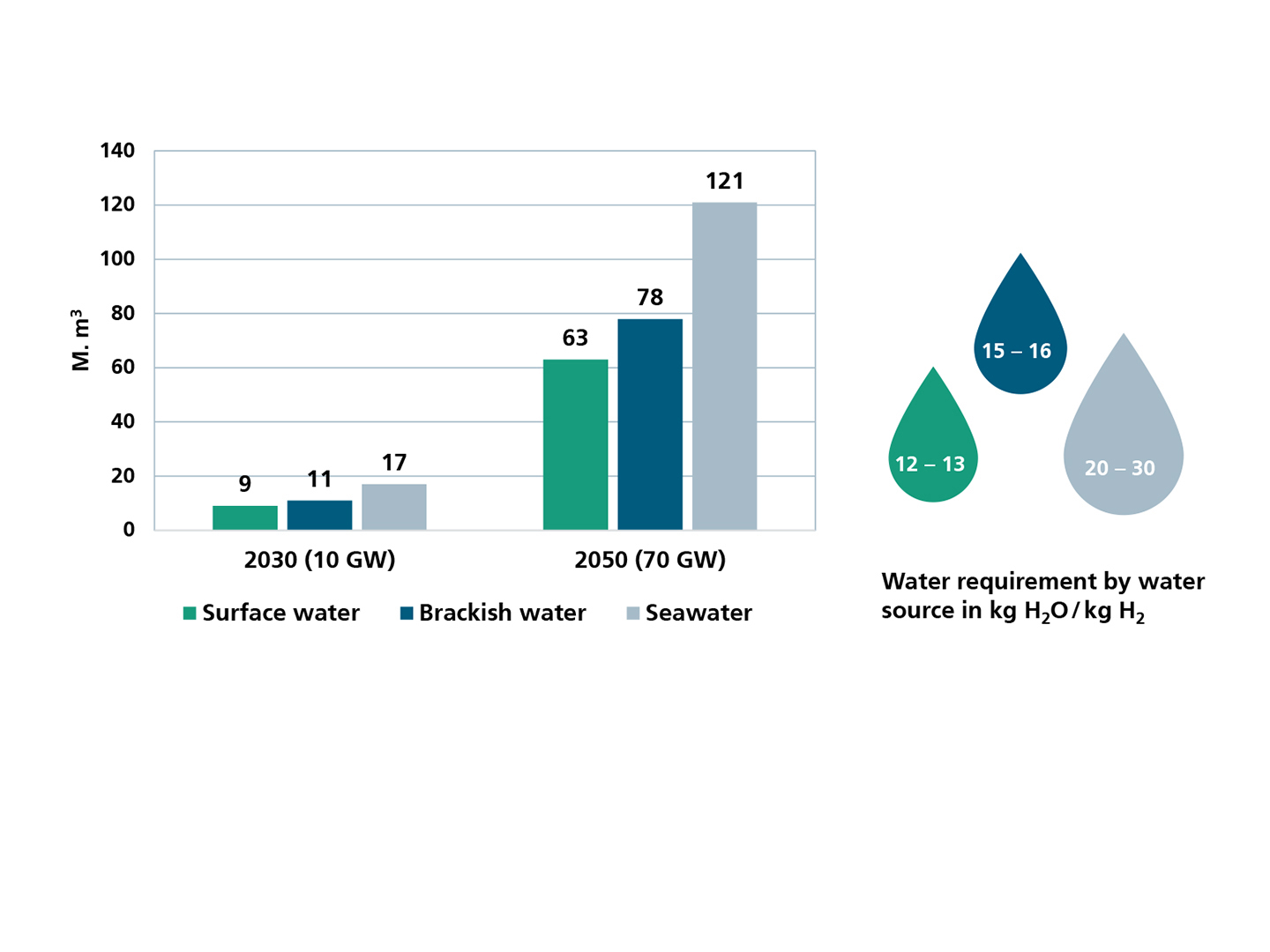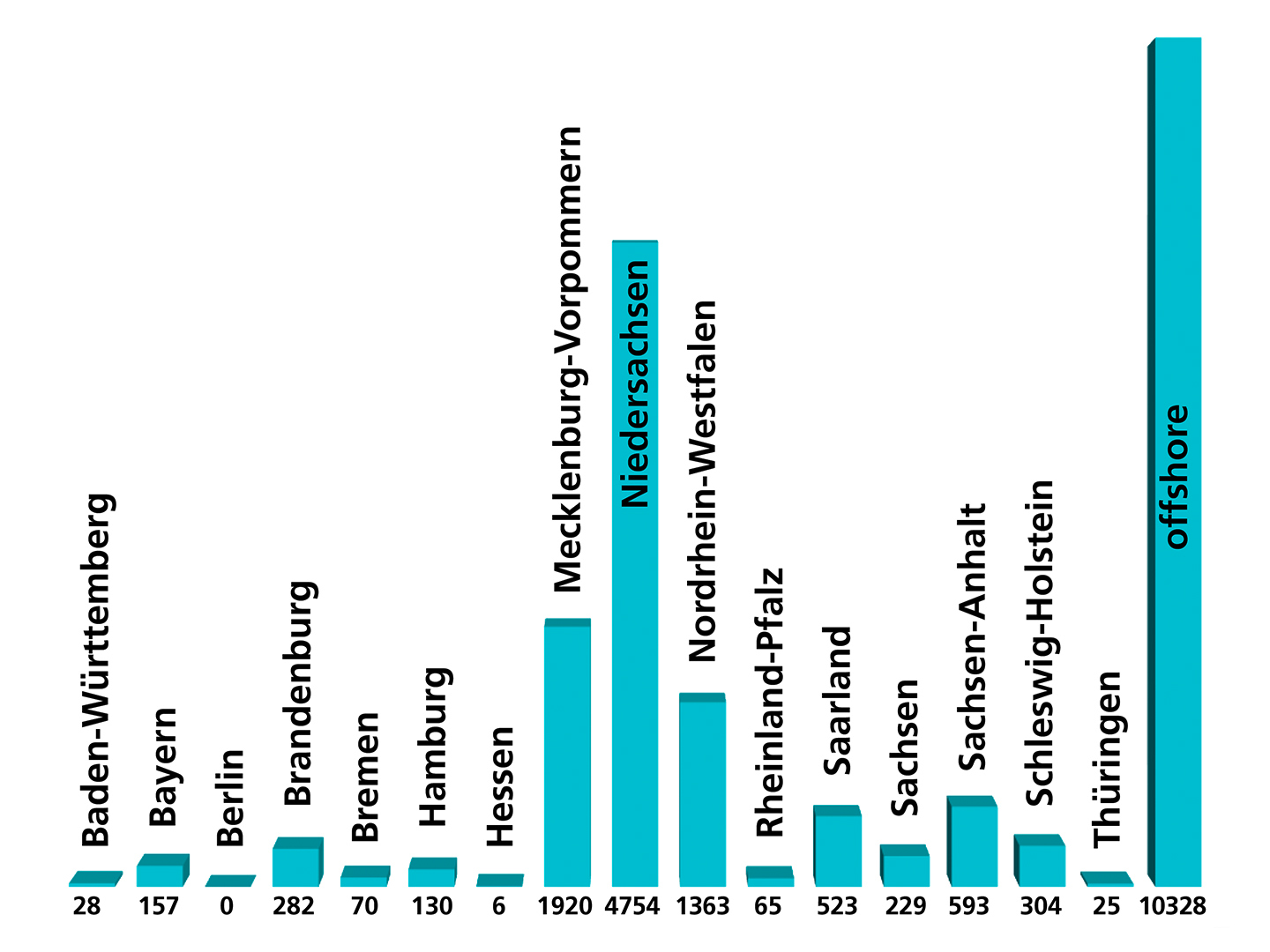The green hydrogen economy is a key pillar in energy transition. Ambitious expansion targets have been set in the national hydrogen strategy[1] . For achieving these goals, significant additional quantities of water must be extracted at regional level – for example, for the ENERGY HUB Port of Wilhelmshaven.
The ENERGY HUB Port of Wilhelmshaven an association of over 40 companies – aims to produce 34.1 terawatt hours of climate-friendly hydrogen (per year) by 2031 using electrolysis[2]. To produce this amount of hydrogen, 7.72 million cubic meters of water per year are required – excluding cooling water. According to a DVGW study, the cooling water consumption can be up to 25 kg per kilogram of hydrogen produced[3]. By way of comparison, the largest water association near Wilhelmshaven – the Oldenburg-Ostfriesischer Wasserverband OOWV – supplied 79.1 million tons of water per year to its more than one million customers according to its 2023 annual report[4]. In order to supply the ENERGY HUB, the OOWV would have to provide 34 percent more water; in a region where water use is already restricted at times. Despite this, the BMUV's water strategy[5] and the BMWK's energy strategy[6] stand side by side, unconnected. As responsibilities and the legal framework have not been clarified, this results in planning uncertainty at the level of the actors involved.
Bottleneck for hydrogen economy
Some regions focus on green hydrogen technology, and at selected locations, the planning processes for hydrogen hubs are already well advanced. Planning uncertainty can have severe consequences for the parties involved, especially during hydrogen market ramp-up. The German Technical and Scientific Association for Gas and Water (DVGW) describes in a recent study[7] that water resources in Germany are sufficient for the production of green hydrogen. However, is this assumption also plausible to hydrogen sites and regional actors who are already suffering from drought and water scarcity at the present time? Some regions are rightly concerned, as a study evaluating hydrogen sites in Lower Saxony shows[8]. For the district of Leer, for example, it advises against extracting water from groundwater.
The Hydrogen Acceleration Act (WassBG) has also given rise to criticism from some interest groups. The WassBG aims to accelerate the hydrogen transformation in Germany by introducing fast, simplified and digitalized procedures for the planning, approval and awarding of hydrogen projects. The rural population of Lower Saxony fears that their water needs will be given lower priority and expressed this concern last year in an incendiary letter to Lower Saxony's members of parliament.[9]
Transparency and knowledge defuse conflicts and create planning certainty
Together with partners from the humanities and natural sciences, Fraunhofer UMSICHT develops an innovative dialogue process (EnAqua-Dialog). The process is intended to be implemented in hydrogen model regions with water and energy suppliers, municipalities, and society. In parallel, Fraunhofer researchers prepare studies on the availability, market, costs and maturity of technologies for the treatment of different water qualities for electrolysis. Complete site analyses are also carried out.
Supply gaps: Technologies tap alternative water sources
Fraunhofer UMSICHT identifies alternative water sources that are not in direct competition with drinking water production and irrigation. These can be, for example, industrial wastewater and treated wastewater from municipal wastewater treatment plants, or brackish water, and other site-specific water sources. To this end, treatment processes are developed from laboratory scale to pilot scale, with the aim of using them for alkaline electrolysis or polymer electrolyte membrane (PEM) electrolysis.
 Fraunhofer Institute for Environmental, Safety and Energy Technology UMSICHT
Fraunhofer Institute for Environmental, Safety and Energy Technology UMSICHT
